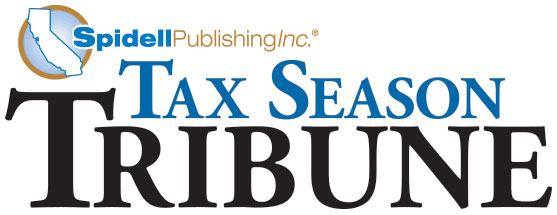
February 15, 2015
The IRS has saved the northern spotted owl
 Credit: Hollingsworth, John and Karen/USFWS
Credit: Hollingsworth, John and Karen/USFWS
The IRS just released Rev. Proc. 2015-20 to provide substantial relief to small taxpayers from the Form 3115 filing requirements. In pulling back on the requirements set forth by the tangible property repair (TPR) regulations and the related Form 3115 filing requirement, the IRS has tax practitioners, taxpayers, and PETA rejoicing. Why is PETA excited about Form 3115? Enter the northern spotted owl.
The majestic northern spotted owl resides in the old-growth forests of the Pacific Northwest. But with the finalization of the TPR regulations and those controversial Form 3115 filing requirements, there would have been an increased demand for paper, which would have been good for the logging industry, and bad for the northern spotted owl (and for taxpayers who fall under this requirement).
The IRS was estimating receipt of around 4 million Forms 3115 this filing season. At eight pages, Form 3115 is required to be paper-filed. Let's assume filings of 10 pages, which includes two pages of attachments. That would have been 40 million pieces of paper sent to the IRS just for this one form. Generally, one tree makes 16.67 reams of copy paper, or 8,333.3 sheets.1
That's 40 million sheets of paper ÷ 8,333.3 sheets per tree = 4,800 trees sawed down so that taxpayers could properly report random changes of accounting methods mandated by the TPRs.
That would have been 4,800 fewer trees in which the northern spotted owl can make its nest. The bird is already on the threatened species list,2 and Form 3115 almost was its hooooo de grâce (along with tax preparers who would have been required to complete these forms).
So the next time you hear the haunting call of the northern spotted owl, you can thank the IRS.
And on a serious note, the Revenue Procedure:
- Allows small taxpayers (assets totaling less than $10 million or average gross receipts of $10 million per year for past three years) to make accounting method changes related to the tangible property repair regulations on a prospective basis for amounts paid, incurred, and dispositions for taxable years beginning on or after January 1, 2014. No more retroactive application;
- Such taxpayers will make the adjustment on their 2014 tax return without having to file a Form 3115; and
- The Revenue Procedure asks for comments on whether it is appropriate to increase the de minimis safe harbor $500 limit.
More details will be forthcoming.
ACA creates anomalies when it comes to dependents
Has there ever been a time when having a dependent on your return is a bad thing? Surely, a dependent can be a very good thing. A dependent may be worth an exemption, a preferred filing status (HOH), a Child Tax Credit, an Additional Child Tax Credit (refundable), and an EITC (also refundable). A dependent may be worth a stack of Benjamins.
At worst, a dependent has been worth nothing (AMT, exemption phaseouts). But, a dependent has never actually cost the taxpayer.
Until now.
Consider this scenario. You make $200,000. You get insurance through your employer at the beginning of the year covering your then-household consisting of you, your spouse, and daughter, Missy. During the year, your son, Free Spirit, the Prodigal Son, moves back in free of any worldly constraints other than his guitar and surf board, and certainly not other than health insurance. Soon, a pungent, organic odor starts wafting out from under his door.
If you even qualify to claim him as your dependent you are responsible for his coverage, and at the greater of $95 or 1% of your income, your penalty will be roughly $2,000. I guarantee that won't compare favorably to the value of the exemption.
The dependent effect, however, might work in reverse. At the beginning of the year, your household consists of just you which — no matter the severity of your multiple personality disorder — still counts as a household of one. You apply for, and get, an advanced Premium Tax Credit based on that household of one.
During the year, Mom moves in. She's on Medicare (so she's covered) and her only income is her Social Security check. She's not required to file a return, so her income is not taken into consideration in computing the credit, but she is counted in determining final household size (1+1=2). The increase in household size increases your relevant poverty line, which decreases your contribution percentage, which increases your final credit.
Suppose Mom wasn't on Medicare, and she had no other insurance and wasn't entitled to an exemption. She will still help increase your credit but you'll have to pay a penalty for her not having insurance ("Thanks, Mom! Thanks a bunch!").
These results may appear to be anomalies, not intended, but they are real-life results and there are endless variations on them, as we'll surely see as we work our way through tax season.
Computing COGS for marijuana dispensaries
 The IRS has issued guidance on which expenses a marijuana dispensary business may deduct, regardless of whether the dispensary sells recreational or medical marijuana.1 The Chief Counsel Advice (CCA) says that marijuana businesses can write off cost of goods sold, such as direct material costs and indirect production costs, but must compute COGS using the rules under IRC §471, rather than under IRC §263A. IRC §263A increased the types of costs that are inventoriable, compared to the rules under IRC §471. Note: IRC §263A is a timing provision. It does not change the character of any expense from "nondeductible" to "deductible," or vice versa.
The IRS has issued guidance on which expenses a marijuana dispensary business may deduct, regardless of whether the dispensary sells recreational or medical marijuana.1 The Chief Counsel Advice (CCA) says that marijuana businesses can write off cost of goods sold, such as direct material costs and indirect production costs, but must compute COGS using the rules under IRC §471, rather than under IRC §263A. IRC §263A increased the types of costs that are inventoriable, compared to the rules under IRC §471. Note: IRC §263A is a timing provision. It does not change the character of any expense from "nondeductible" to "deductible," or vice versa.
A dispensary may not deduct other business expenses, consistent with the IRC §280E treatment of business expenses incurred in an illegal trade.
A cash-basis facility would therefore have more taxable income than its accrual-basis counterpart. The CCA states that when auditing a cash-basis marijuana dispensary, the IRS has the authority to permit the taxpayer to deduct from gross income its costs that would have been inventoriable if the taxpayer used the accrual method.
1 CCA 201504011
More on the fate of the ACA
The Supreme Court is preparing to hear King v. Burwell next month, which may give new meaning to "the marketplace." The justices will be reviewing the Fourth Circuit decision, which held that premium credits are available regardless of whether the exchange originates from the state or the federal government (remember "a pizza is still a pizza"?).
If the Court decides in favor of the plaintiffs, who argue that only those who purchased insurance through a state exchange are eligible for subsidies, then individuals who purchased insurance through a federal exchange would no longer have access to the Premium Tax Credit. And so the health care saga continues.
A few fun facts about this week's writers:
 Sandy Weiner, J.D. lives in sunny San Diego and takes full advantage of the perfect weather by pedalling on her bike and paddling on her kayak. Stay out of this iron woman's way!
Sandy Weiner, J.D. lives in sunny San Diego and takes full advantage of the perfect weather by pedalling on her bike and paddling on her kayak. Stay out of this iron woman's way!
 Kathryn Zdan, EA is not only director of the editorial department, she also "rocks the house" as a regular in curling bonspiels around the country.
Kathryn Zdan, EA is not only director of the editorial department, she also "rocks the house" as a regular in curling bonspiels around the country.
 Tim Hilger, CPA is busily preparing taxes today. Tim is a golf nut who has played courses in all 50 states and often reminisces about his younger days shredding on his bass guitar.
Tim Hilger, CPA is busily preparing taxes today. Tim is a golf nut who has played courses in all 50 states and often reminisces about his younger days shredding on his bass guitar.
 Diane Fuller is a gourmet cook with a refined taste in all things sweet. From traditional Japanese desserts to the best bacon donut that's ever appeared in our break room, Diane knows how to satisfy her sweet tooth. She also writes children's poetry!
Diane Fuller is a gourmet cook with a refined taste in all things sweet. From traditional Japanese desserts to the best bacon donut that's ever appeared in our break room, Diane knows how to satisfy her sweet tooth. She also writes children's poetry!
Never miss an issue
To get on the Tax Season Tribune mailing list, contact anthonya@spidell.com.